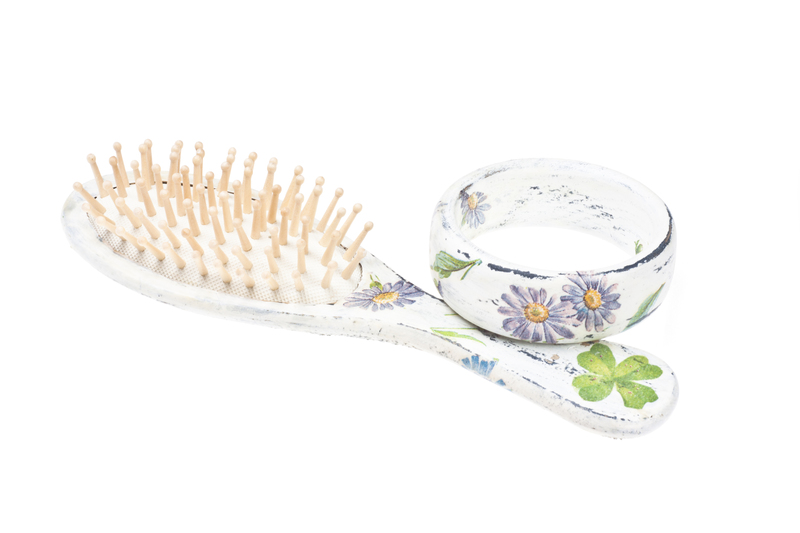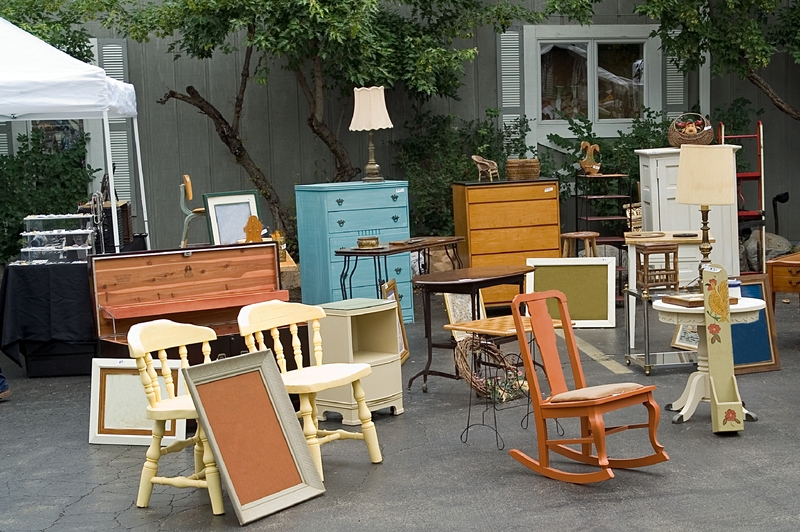Giving New Purpose to Old Objects through Innovative Upcycling
Upcycling has grown from a niche trend into a powerful movement, inspiring people worldwide to give new life to discarded and forgotten objects. By injecting creativity and sustainability into the transformation process, innovative upcycling is not just reducing waste--it's creating opportunity, beauty, and practicality. This article delves into how you can give new purpose to old objects, explores the environmental and economic impact of upcycling, and offers practical ideas for upcycling at home and in the community. Whether you're an eco-conscious crafter or simply want to make the most of what you have, read on to discover the world of upcycling and how you can be a part of it.
What is Upcycling?
Upcycling--sometimes called creative reuse--refers to the process of taking waste materials or unwanted products and transforming them into new materials or products of greater value. Unlike recycling, which often breaks down materials for reuse, upcycling preserves the integrity of the original object, giving it a second life and, often, new purpose.
How Upcycling Differs from Recycling
- Recycling typically involves breaking down objects into raw materials, which are then remanufactured, sometimes lowering the material's quality (e.g., plastic bottles turned into lower-grade plastic items).
- Upcycling maintains or enhances the object's value, transforming it creatively into something new--a lamp made from an old teapot, or a set of shelves crafted out of discarded ladders.
By upcycling, you contribute to a more sustainable lifestyle, reduce landfill waste, and unleash your own creative potential.

The Growing Importance of Innovative Upcycling
Today, upcycling is at the forefront of the circular economy, which stresses resourcefulness and sustainability over mass production and disposal. With environmental crises intensifying, creative upcycling solutions have never been more critical.
- Reduces waste in landfills and oceans.
- Decreases the demand for new materials and resources.
- Fosters local creativity, entrepreneurship, and eco-conscious innovation.
- Promotes community engagement and green jobs.
Giving new purpose to old objects through innovative upcycling empowers both individuals and communities to become active participants in conserving the environment while expressing unique, practical, or artistic visions.
Creative Ways to Reimagine Old Objects
Let your imagination run wild! Almost any old object--from worn furniture and appliances to glass jars or tattered textiles--can be upcycled into something both valuable and beautiful. Here are just a few innovative upcycling ideas to spark your inspiration:
1. Furniture Transformation
- Turn ladders into bookshelves: Prop a vintage wooden ladder against the wall and use each rung as a shelf for plants, books, or keepsakes.
- Revamp old dressers: Remove drawers, repaint, or add unique hardware for a shabby chic or modern look. Removed drawers themselves can become under-bed storage or wall shelves.
- Convert pallets: Recycled wooden pallets can become anything from sofas and tables to garden beds and vertical planters.
2. Upcycling Textiles
- T-shirt quilts: Stitch together old t-shirts into a memory-filled quilt, perfect for gifting or cozying up.
- Denim crafts: Transform worn jeans into durable aprons, tote bags, or cushion covers.
- Rag rugs: Braid or weave scraps of fabric into vibrant and eco-friendly rugs.
3. Repurposing Everyday Household Items
- Glass jars and bottles: Convert into flower vases, candle holders, food storage, or even dazzling pendant lights.
- Tin cans: Paint and label as desktop organizers, planter pots, or lanterns.
- Old windows and doors: Use as unique wall art, picture frames, or even garden trellises.
4. Upcycled Lighting Projects
- Bottle lamps: Drill a hole for a cord, add a bulb, and top with a charming shade. Instant mood lighting!
- Colander chandeliers: Repurpose colorful metal colanders for kitchen or outdoor lighting fixtures.
5. Garden and Outdoor Upcycling
- Tyre planters: Paint old tyres vivid colors and stack for multi-level planters.
- Bathtub gardens: Convert unused tubs into beautiful outdoor flower beds or mini ponds.
- Wooden crates: Stack and secure for rustic garden shelving or vertical herb gardens.
The possibilities with giving new life to old objects are genuinely endless. *Upcycling* lets creativity and eco-consciousness work hand in hand.
Why You Should Embrace Upcycling
Whether you're motivated by a desire to help the planet, need to save money, or simply enjoy DIY projects, upcycling offers a host of benefits:
- Environmental Impact: Every item upcycled means one less object in the landfill and one less new product that needs to be manufactured--reducing resource use and greenhouse emissions.
- Unique Customization: Upcycled items are one-of-a-kind. No mass-produced product has the same character or story.
- Cost Efficiency: Upcycling can save money by repurposing what you already have, reducing the need for costly new purchases.
- Personal Fulfillment: There's immense satisfaction in transforming discarded things into something both beautiful and useful.
- Building Community: Many upcycling projects bring people together for workshops, art exhibits, or local sustainability fairs.
How to Start Upcycling: Practical Steps for Beginners
Interested in giving new purpose to old objects through innovative upcycling but not sure where to start? Here's a simple roadmap:
- Take Stock: Look around your home for items you no longer need, but that could be safely reused. Think beyond the obvious--clothes, dishes, electronic waste, packaging, and more.
-
Seek Inspiration:
- Browse online platforms and upcycling communities (such as Pinterest, Instagram, or Etsy).
- Visit local flea markets or salvage yards to see creative secondhand finds.
- Plan Your Project: Consider what skills or tools you might need--whether it's basic sewing, carpentry, painting, or electrical work for DIY lamps.
- Safety First: Use proper protective gear if cutting, sanding, or handling potentially hazardous materials.
- Experiment & Enjoy!: Remember, mistakes can lead to new design ideas. Don't be afraid to experiment--each attempt teaches something new.
Are There Any Skills Required?
While certain projects might require specialized skills (such as woodworking or wiring), many upcycling ideas are beginner-friendly and only need simple tools like glue guns, paintbrushes, and a creative mindset. There are countless online tutorials to help you learn as you go!
Upcycling Success Stories from Around the World
Transformative upcycling isn't just for crafters--many artists, designers, and business owners have made waves by repurposing old items. Here are a few notable examples:
1. Ocean Sole - Kenya
Ocean Sole is an innovative social enterprise that collects discarded flip-flops from Kenyan beaches and transforms them into vibrant, hand-carved sculptures of wildlife and everyday objects. This project not only reduces landfill and ocean debris, but also provides income for hundreds of artisans.
2. TerraCycle - Global
TerraCycle partners with businesses internationally to collect hard-to-recycle waste (like chip bags and coffee pods) and upcycles it into everything from playgrounds to park benches and durable bags.
3. Freitag - Switzerland
Freitag, a pioneer in upcycled fashion, uses discarded truck tarpaulins to design unique, weather-resistant bags and accessories, marrying sustainability with Swiss precision and style.
4. Bottle Houses - Various Locations
Visionary builders in countries from Canada to Bolivia have constructed entire homes and community buildings out of discarded glass bottles and other recyclable materials, creating durable, beautiful, and eco-friendly living spaces.
Upcycling in Art and Design
Many artists have embraced upcycling techniques, seeing beauty and possibility in what others would discard. Upcycled art installations and sculptures are now a common feature at festivals, museums, and galleries worldwide.
- Fashion: Upcycled textiles have given rise to stunning couture, proving that "eco-friendly" can also mean "ultra-chic."
- Interior Design: Salvaged wood, vintage signs, and architectural fragments are now centerpieces in high-end and bohemian designs alike.
- Public Art: Repurposed plastics, metals, and tires become massive murals and sculptures, raising awareness about recycling and conservation.
Innovative Upcycling and The Circular Economy
In modern sustainability circles, the circular economy is a model for rethinking waste. It's about designing systems that keep resources in use for as long as possible.
- Upcycling plays a crucial role by extending the lifecycle of products and materials that would otherwise be discarded.
- Businesses leveraging upcycled goods often find reduced production costs, increased brand loyalty, and a positive environmental reputation.
- Consumers can participate by purchasing responsibly or joining upcycling efforts.
Building a Community Around Upcycling
Communities can unite around upcycling through initiatives like:
- Upcycling workshops at community centers, libraries, or festivals.
- Swap meets and repair cafes where people exchange items or fix old goods together.
- Collaborative art installations and public murals constructed from salvaged materials.
*Giving new life to old objects* not only helps the environment--it fosters collaboration, learning, and pride in shared local achievements.

Tips for Successful and Sustainable Upcycling
- Source safely and responsibly: Avoid objects that may contain hazardous materials (painted with lead, asbestos insulation, electronics with toxic components).
- Invest in basic tools: A set of hand tools, brushes, glue, and safety equipment goes a long way.
- Document and share: Photograph your creations and share them online - you'll inspire others and join a global community.
- Give back: Donate or sell upcycled items locally to support community initiatives or fund future projects.
- Keep learning: Attend local workshops, watch video tutorials, and follow sustainability leaders for new ideas and best practices.
Conclusion: Why Upcycling is the Future
The transformation of old objects through innovative upcycling stands as a testament to human ingenuity and our collective responsibility to the environment. Each upcycled project, big or small, reduces waste, conserves resources, and adds beauty or function to our lives. By embracing upcycling, you not only give new purpose to old objects but also join a worldwide movement for positive change and creative expression.
Ready to start your own upcycling adventure? Take a fresh look at what's around you, seek inspiration, and connect with fellow upcyclers in your community. Together, we can build a more sustainable, stylish, and resourceful future--one transformed object at a time.